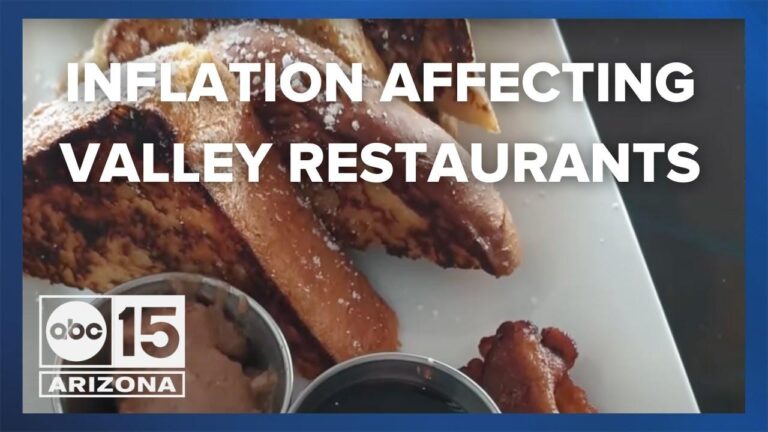Arizona has been identified as the second highest state in the nation for restaurant inflation, according to a recent report highlighted by The Business Journals. The analysis reveals a significant rise in dining costs across the state, reflecting broader economic pressures impacting both consumers and foodservice operators. This surge in restaurant prices underscores ongoing challenges within the industry, including supply chain disruptions, labor shortages, and increased operating expenses, raising concerns for diners and business owners alike.
Arizona Faces Sharp Rise in Restaurant Costs Amid National Inflation Trends
Amid a nationwide surge in inflation, Arizona’s restaurant industry has experienced one of the most significant cost increases in the United States. According to recent data, the state ranks second nationally for rising prices in dining establishments, driven by escalating expenses in key areas such as ingredients, labor, and energy. This uptrend not only affects restaurant owners but also reshapes consumer behavior as menus adjust and patrons reconsider their dining frequency.
Key factors contributing to the rise in restaurant costs include:
- Supply chain disruptions leading to higher ingredient prices
- Increasing minimum wages impacting labor costs
- Rising utility and transportation expenses
- Heightened demand in a recovering post-pandemic economy
| Cost Factor | Estimated Increase (%) |
|---|---|
| Food Ingredients | 14.2% |
| Labor | 12.8% |
| Energy & Utilities | 9.6% |
| Transportation & Delivery | 8.3% |
Key Drivers Behind Arizona’s Steep Increase in Foodservice Prices Explored
Several overlapping factors have fueled the rapid surge in foodservice prices across Arizona, positioning the state as the second-highest in the nation for restaurant inflation. Key contributors include persistent supply chain disruptions that have driven up the cost of essential ingredients, coupled with a labor market struggling to meet demand. Increased wages to attract and retain staff, while vital, have translated into higher menu prices for consumers. Additionally, local regulations and rising utility costs have compounded operational expenses for eateries statewide.
The impact of these factors can be broken down as follows:
- Supply Chain Strain: Disruptions in sourcing meats, produce, and dairy have increased wholesale prices by nearly 15% since last year.
- Labor Market Dynamics: Wage hikes averaging 10% to combat worker shortages directly affecting staffing budgets.
- Energy and Utilities: Climbing utility rates, especially electricity, have added an estimated 5% to monthly operating costs.
- Regulatory Compliance: New health and safety mandates have introduced additional expense layers in sanitation and training programs.
| Price Driver | Estimated Impact | Effect on Menu Prices |
|---|---|---|
| Supply Chain Costs | +15% | +7% |
| Labor Wages | +10% | +5% |
| Utilities | +5% | +2% |
| Regulatory Fees | +3% | +1% |
Impact of Rising Restaurant Expenses on Local Businesses and Consumers
As the cost of dining out continues to escalate in Arizona, local restaurants face mounting pressure that directly affects both their operations and patrons. Increased expenses for ingredients, labor, and utilities are forcing many establishments to revise their pricing strategies, often leading to menu price hikes. This surge not only threatens the profit margins of small business owners but also compels some to reduce staff hours or limit menu options, impacting the overall dining experience.
Consumers are feeling the pinch as well, with many reconsidering their spending habits amid tighter budgets. Dining out less frequently or opting for more affordable alternatives has become common, influencing the local economy. The ripple effect includes:
- Reduced customer footfall for neighborhood eateries
- Shift toward takeout and delivery to save costs
- Greater demand for promotions and discounts
| Expense Category | Year-over-Year Increase | Impact on Pricing |
|---|---|---|
| Food Ingredients | 15% | +10-12% |
| Labor Costs | 12% | +8-10% |
| Utilities | 9% | +5% |
Strategies for Restaurateurs to Navigate Inflation and Sustain Profitability
Restaurateurs in Arizona face unique challenges as inflation continues to pressure costs across the board, from ingredients to labor. To preserve profitability, many are adopting innovative approaches that balance quality with cost-efficiency. Key tactics include optimizing menu offerings to focus on high-margin items, leveraging seasonal and locally sourced produce to reduce supply chain expenses, and investing in technology solutions that streamline ordering and inventory management.
Additionally, operators are rethinking their pricing strategies carefully, employing dynamic pricing models that reflect real-time market conditions without alienating customers. Enhancing customer experience through personalized services and loyalty programs also plays a critical role in maintaining patronage despite rising menu prices. Below is a summary table illustrating effective strategies increasingly adopted by Arizona restaurants:
| Strategy | Impact |
|---|---|
| Menu Engineering & Focus on High-Margin Dishes | Improved profitability while managing ingredient costs |
| Local Sourcing & Seasonal Ingredients | Reduced supply chain volatility and fresher offerings |
| Technology Integration (POS & Inventory) | Enhanced operational efficiency and minimized waste |
| Dynamic Pricing & Value-Based Promotions | Maintained customer loyalty despite price adjustments |
In Summary
As Arizona grapples with rising restaurant costs, businesses and consumers alike are feeling the pressure of inflation’s impact on the dining industry. With the state ranking second highest nationwide for restaurant inflation, industry stakeholders will need to navigate these economic challenges carefully to maintain growth and sustainability. Continued monitoring and strategic adaptation will be critical as Arizona’s restaurant sector strives to serve its customers amid an increasingly costly landscape.







